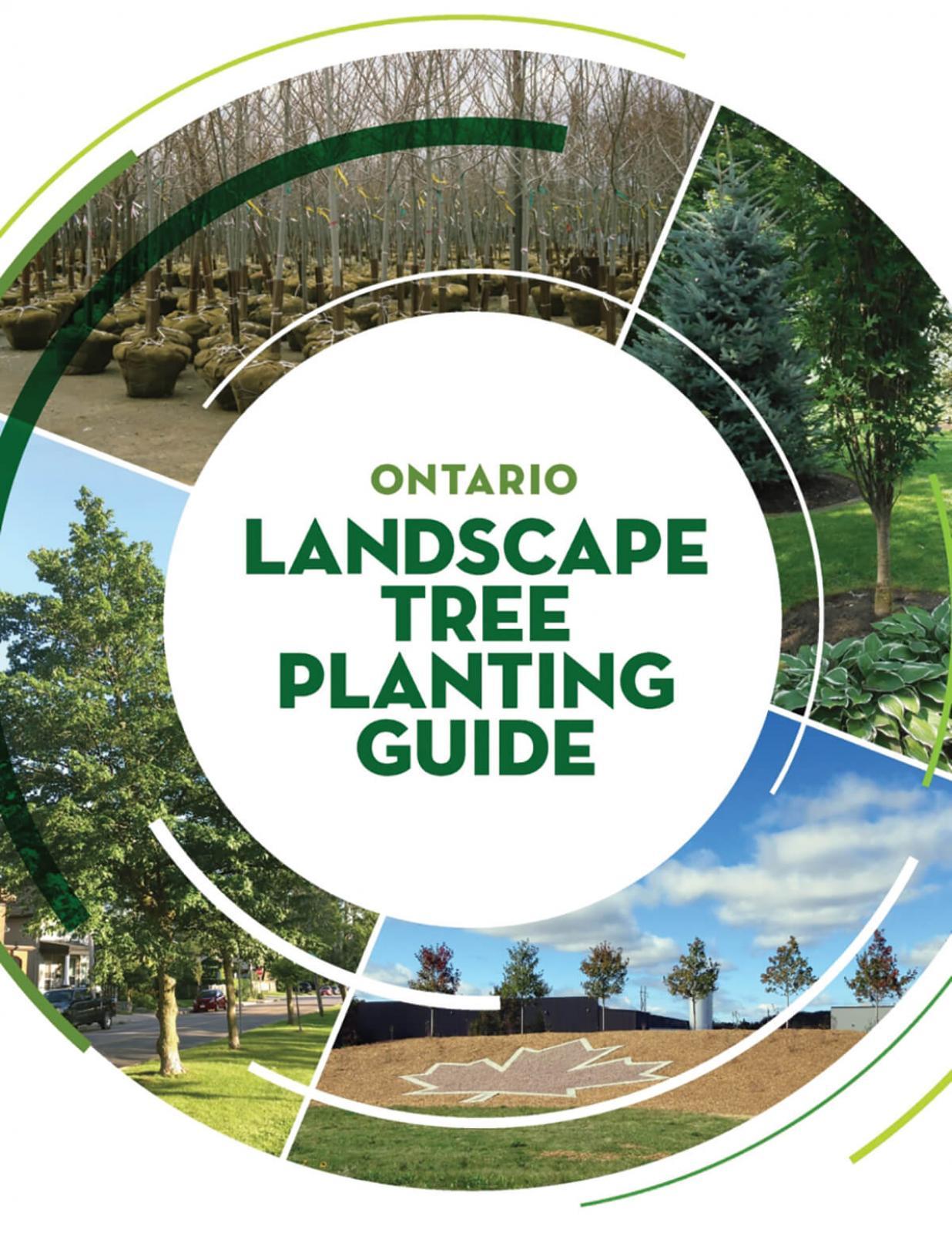December 1, 2019

Ontario Landscape Tree Planting Guide
Green profession gamechanger:
Ontario Landscape Tree Planting Guide
The Ontario Landscape Tree Planting Guide is the most comprehensive reference document available to the landscape industry. It captures years of research conducted by Vineland Research and Innovation Centre (Vineland) and experts from around the world on tree survival and establishment in challenging environments. The 99-page document is available for free download at greeningcanadianlandscape.ca and landscapeontario.com/ontario-landscape-tree-planting-guide.
The Vineland team who authored the guide includes Dr. Darby McGrath (DM), Research Scientist; and Jason Henry (JH) and Ryan Munroe (RM), Research Technicians in the Greening the Canadian Landscape Program. The team answered a few questions on how the Guide came together and how it will help the industry.
Q. What is the purpose of this reference guide?
DM: The guide is intended for landscape architects, designers, contractors, urban forest managers, horticulturists and other professionals who have a working knowledge of the horticultural trades. Its purpose is to capture the wealth of evidence-based information available on tree planting, to summarize research findings and make them accessible to practitioners.
Q. How was it developed?
DM: In 1994, Landscape Ontario published a useful guide for the industry that was revised in 2005. In 2018, Landscape Ontario partnered with Vineland to develop a 21st century version, based on a comprehensive review of the research contained within the original guide, to ensure that the information was relevant.
Q. What is the format of the guide?
DM: The guide is broken up into step-by-step chapters to provide readers with a summary of relevant content and up-to-date research findings. There is also a series of corresponding field sheets available where pertinent information from the chapters is itemized into actionable items.
Q. What was the most challenging part when preparing the guide?
RM: It was challenging to strike the correct balance between conveying scientific findings in a detailed manner and providing discrete recommendations while using clear language. In many areas of the guide, prior research is well-developed, providing clear recommendations, while in other areas, research is at an earlier stage, meaning recommendations may be less specific.
Q. What technical skills captured in the guide do you feel are the most useful to professionals?
JH: I believe the most useful technical skill in this guide is the initial evaluation of a site, both above- and below-ground. This section includes practical and easy to implement evaluation techniques, such as compaction testing.
Q. What did you learn while writing the guide?
RM: Mainly that there was a need for this type of guide, not just in Ontario, but across North America. Evaluating every step in the process allowed us to distil those steps into field sheets, a unique and valuable contribution.
Q. How do you think this guide will evolve over the next 10 years?
RM: We envision the guide to be updated periodically to reflect advances in knowledge, especially in areas such as the use of organic amendments, biological additives, site preparation techniques and nursery stock root quality. These are specific areas of interest to us and other researchers.
Q. What’s next?
DM: We are looking forward to getting the guide into the hands of practitioners across Canada. I am presenting it at the 2019 Green Industry Show and Conference in Calgary. I will also be presenting this guide at Landscape Ontario Congress 2020 with Ian Bruce and Glen Lumis, two of the guide steering committee members. Additionally, it will be included in the Canadian Landscape Standard (CLS), as it has been reviewed and approved by the CLS committee in spring of 2019.
 Darby McGrath, Glen Lumis and Ian Bruce.
Darby McGrath, Glen Lumis and Ian Bruce.